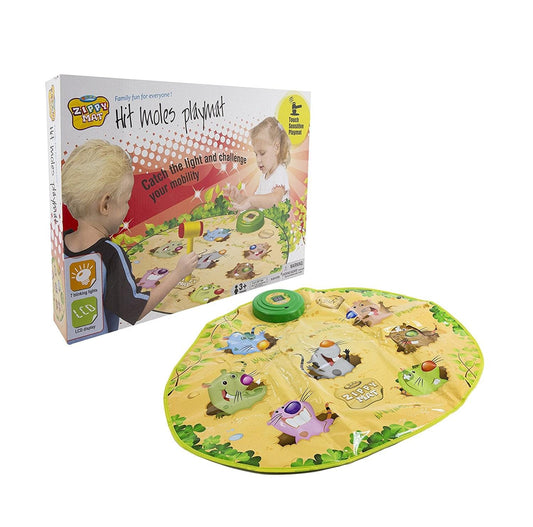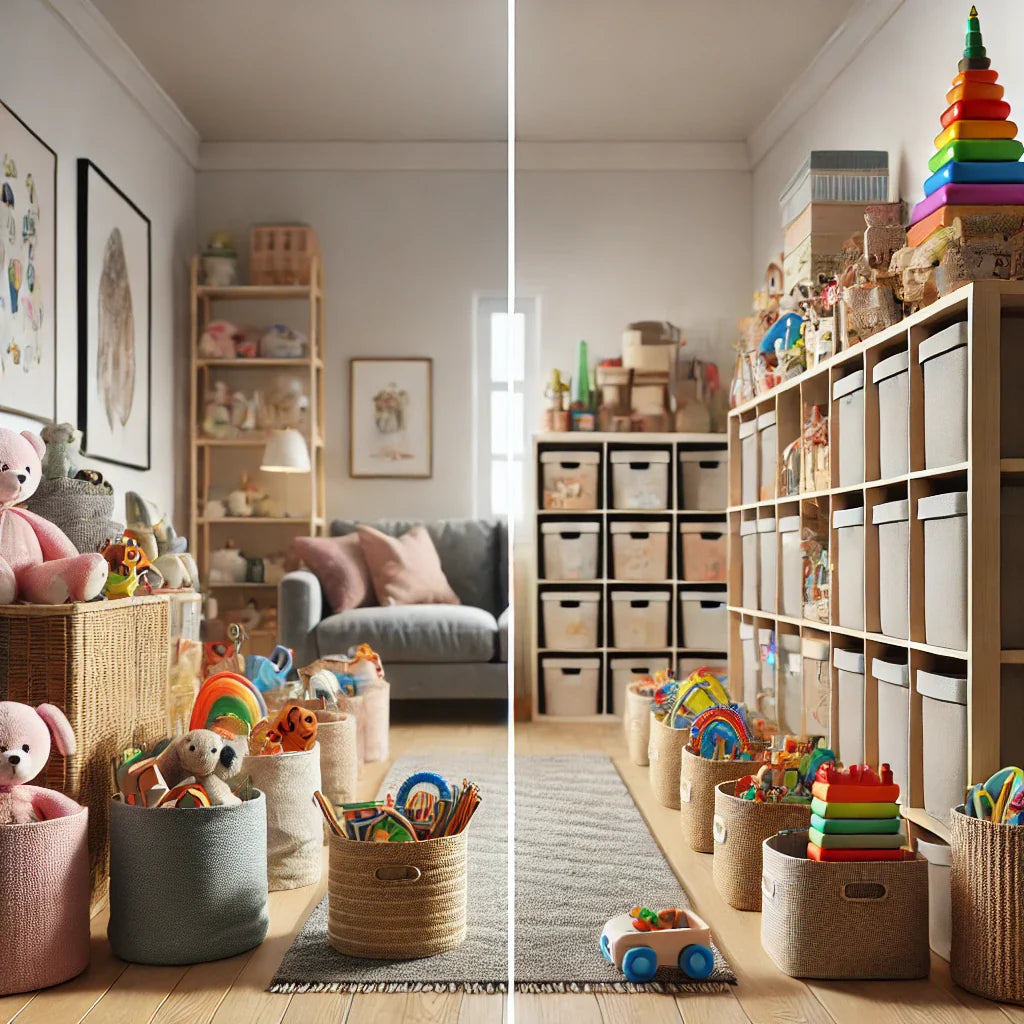Introduction
The Importance of Smart Toy Storage
No matter how minimalist or organized a parent tries to be, one truth remains—toys multiply fast. One moment, you’re dealing with a few blocks and a doll or two, and the next, your home looks like a toy shop exploded in the living room. That’s why smart, functional toy storage isn’t just a “nice-to-have”—it’s a necessity.
Having a good storage system in place keeps your home tidy, helps your kids take responsibility, and even supports better play. But here’s the question many parents wrestle with: Should I go with toy storage baskets or toy storage boxes? What’s the difference, and which one is better?
Spoiler alert: there’s no one-size-fits-all answer. But understanding the pros and cons of both can help you choose the best fit for your space, your style, and your child’s toy habits.
Why Choosing the Right Type Makes a Big Difference
It’s easy to assume all toy storage is the same. But when you dig a little deeper, you’ll see how the style, shape, material, and function of storage affects everything from how clean your space feels to how easily your child can manage their toys.
Here’s why making the right choice matters:
-
It saves you time during cleanup.
-
It makes it easier for kids to find (and put back) their toys.
-
It keeps delicate toys from getting crushed.
-
It improves the overall aesthetic of your home—yes, even with kids.
Whether you’re living in a small apartment or outfitting a full playroom, choosing between toy storage baskets and toy storage boxes is a decision worth making thoughtfully. Let’s start by exploring each option in detail.
What Are Toy Storage Baskets?
Common Materials and Styles
Toy storage baskets are open-topped containers typically made from soft or woven materials, and they come in all shapes and sizes. They’re designed to be lightweight, easy to carry, and often double as decorative pieces in a child’s room or shared living space.
Popular materials include:
-
Cotton or canvas (soft, collapsible, easy to clean)
-
Wicker or rattan (more stylish, often used in living areas)
-
Plastic baskets with handles (durable and colorful)
These baskets can range from structured cubes to flexible, floppy bags—and everything in between.
Pros of Using Toy Storage Baskets
Here’s why many parents love baskets for toy storage:
-
Lightweight and portable – Even toddlers can carry or drag them around.
-
Great for soft toys and plushies – Their open design is perfect for frequently used items.
-
No lid = faster access – Perfect for quick toss-in clean-ups.
-
Stylish and versatile – Many baskets look more like decor than kid gear.
Plus, baskets are ideal if your child has a favourite category of toys they play with daily—like stuffed animals, dolls, or dress-up gear. Keeping these visible and accessible makes independent play (and tidy-up) much smoother.
When Baskets Work Best in a Kid’s Room
Use toy storage baskets when:
-
You want open, easy access for younger kids.
-
You're storing soft or odd-shaped toys.
-
You need flexible storage that can fit in tight corners or under tables.
-
You want something that looks nice in your living space.
They’re especially useful in nurseries, bedrooms, or any room where you want form and function to work together.
What Are Toy Storage Boxes?
Types of Toy Storage Boxes (Stackable, Lidded, Rolling)
Toy storage boxes are typically rigid containers that come in wood, plastic, or sturdy cardboard. Unlike baskets, boxes often have lids, stackability, or even built-in wheels, giving them a more structured design.
Common types include:
-
Lidded boxes – Great for stacking and keeping things dust-free.
-
Stackable plastic crates – Ideal for small parts like LEGO or craft supplies.
-
Rolling toy boxes – Easy to move and great for multi-use spaces.
-
Compartment-style boxes – With built-in dividers for organized storage.
You’ll find these in every playroom or toy aisle—and for good reason. They’re built for storage efficiency, especially when you’re dealing with hard or bulky toys.
Pros of Using Toy Storage Boxes
Here’s what makes toy storage boxes a go-to for many parents:
-
Stackable = saves space – Use vertical storage to your advantage.
-
Good for structured toys – Blocks, puzzles, cars, and figurines fit perfectly.
-
Lids keep things neat – Great for rotating toys or keeping lesser-used items hidden.
-
Durable and long-lasting – Especially if you choose wood or thick plastic.
Boxes are ideal for families looking to organize their toys by category or frequency of use. They make sorting easier and reduce the visual clutter of open storage.
When Boxes Are the Better Option
Use toy storage boxes when:
-
You want to sort toys by type or rotate toy sets.
-
You need long-term storage that keeps toys protected.
-
You want to use under-bed or stacked storage for space-saving.
-
You’re dealing with multi-piece or small-item sets (like puzzles or building kits).
Boxes also shine in playrooms or shared bedrooms where keeping toys out of sight—or in strict order—is the goal.
Side-by-Side Comparison: Baskets vs Boxes
To help you make the best decision, here’s a head-to-head comparison of toy storage baskets and toy storage boxes based on the most important criteria for parents:
Space Usage and Flexibility
| Feature | Baskets | Boxes |
|---|---|---|
| Shape | Flexible, squeezable into small corners | Structured, great for stacking |
| Stackable | Usually not stackable | Often stackable for vertical space use |
| Storage Fit | Great for under open shelving or soft corners | Ideal for closets, under beds, and modular units |
Verdict:
Boxes win for maximizing space vertically, especially in smaller homes or if you're working with shelves and closets. Baskets are more flexible for on-the-go storage or rooms without rigid furniture.
Durability and Maintenance
| Feature | Baskets | Boxes |
|---|---|---|
| Durability | Varies by material; fabric can wear over time | Typically more durable—especially plastic or wood |
| Easy to Clean | Fabric may need washing | Plastic/wood boxes wipe clean easily |
Verdict:
Boxes win for durability and ease of cleaning, especially in high-traffic areas or when storing mess-prone toys like craft supplies or outdoor gear.
Accessibility for Kids
| Feature | Baskets | Boxes |
|---|---|---|
| Lids | Open access | Often lidded, may require adult help |
| Portability | Lightweight, easy to move | Heavier, but some come with wheels or handles |
| Ease of Use | Great for toddlers and young children | Better for older kids or sorted systems |
Verdict:
Baskets win for accessibility and toddler independence. Their open design and lightweight build make it easy for small children to help with tidying up.
Best for Different Toy Types
| Toy Type | Best Storage Option |
|---|---|
| Plush toys & dolls | Baskets (soft and open) |
| Building blocks | Boxes (structured, stackable) |
| Books & puzzles | Boxes or compartment bins |
| Dress-up items | Baskets (easy to toss in) |
| LEGO, crafts, small items | Boxes (lidded, divided compartments) |
Verdict:
Use baskets for bulkier, soft items, and boxes for structured or sorted sets. The best setups often use both for different categories.
Choosing Based on Room Type
Living Room Storage: Style + Function
In shared family spaces like the living room, storage needs to be stylish, subtle, and multi-purpose. Think soft baskets tucked under coffee tables or next to the sofa, or attractive wooden toy boxes that double as side tables.
Recommendations:
-
Baskets for fast clean-up (e.g., toys get tossed in during nap time).
-
Boxes with lids for storing lesser-used toys or noisy items out of sight.
-
Choose neutral colours or woven textures to blend with decor.
Bedroom Storage: Comfort + Capacity
In kids’ bedrooms, you want storage that feels cozy but can also handle a larger toy load. This is where collapsible baskets and under-bed boxes shine.
Try:
-
Fabric baskets for teddies and bedtime books.
-
Under-bed plastic boxes for rotated toys or seasonal items.
-
A combination of both for toys used in daily play vs. storage.
Playroom Storage: Sorting + Visibility
A playroom is all about play—and the easier it is for your child to see, sort, and return toys, the better.
Best options:
-
Toy boxes with dividers or shelves (like the 3-Tier Storage & Bookshelf from Playkitchen)
-
Stackable bins sorted by toy type
-
Open baskets for quick-grab items
Use clear bins for visibility and labels or picture tags to make clean-up easier, even for pre-readers.
Combo Tip: Why Most Homes Benefit from Both
Mixing Baskets for Plush Toys and Boxes for Structure
Here’s the truth: you don’t have to choose just one. The most organized (and parent-friendly) homes use both toy storage baskets and boxes—and for good reason.
Think of it like this:
-
Baskets are best for soft toys, daily use, and rooms where you need flexible, grab-and-go storage.
-
Boxes are best for keeping structured toys, puzzles, and sets organized, especially in playrooms or long-term storage.
By mixing and matching, you can create a storage system that:
-
Looks great in any room
-
Adapts to your child’s changing needs
-
Helps kids understand where things go
-
Reduces clutter without sacrificing style
This approach also works well if you have kids of different ages—toddlers can access open baskets, while older kids can manage boxes with lids or compartments.
Creating a Balanced Storage System
To design your own all-star setup:
-
Start by sorting toys by type: soft toys, blocks, books, crafts, dolls, etc.
-
Assign baskets to quick-access toys that get daily play.
-
Use boxes to categorize or rotate toys—especially those with lots of pieces.
-
Place baskets low for toddlers and boxes higher or under furniture for occasional toys.
-
Label everything—use words, images, or colors depending on your child’s age.
When used together, baskets and boxes don’t just store toys—they build a child-friendly space that supports play, learning, and easy cleanup.
Product Recommendations from Playkitchen
If you’re ready to upgrade your toy storage system with high-quality, stylish solutions, check out these popular picks from Playkitchen’s Toy Storage Collection:
Car-Themed Toy Storage Boxes (Stackable Set of 3)
View Product →
These fun and stackable boxes make cleaning up a game—perfect for organizing toys by category while adding a pop of colour to your space.
Toy Box on Wheels
View Product →
A mobile toy box that rolls with your child’s play. Use it to rotate toys or move their favourites from room to room without the mess.
Multi-Compartment Shelf with Baskets and Bins
View Product →
This all-in-one solution features both storage baskets and structural bins—ideal for families who want the best of both worlds in a compact, functional design.
Explore the Full Collection
Whether you’re storing puzzles, plushies, or everything in between, Playkitchen’s storage range makes it easy to find a solution that fits your family’s style, needs, and space.
FAQs About Toy Storage Baskets and Boxes
Q1: Which is better for toddlers—baskets or boxes?
Baskets are better for toddlers because they’re lightweight, easy to access, and don’t require lifting lids or navigating compartments. They’re perfect for stuffed toys and daily-use items that toddlers can easily toss in and out themselves.
Q2: Can I use both baskets and boxes in the same room?
Absolutely! In fact, mixing both gives you the flexibility to store a variety of toy types. Use baskets for plushies and larger toys and boxes for items that need structure, like building blocks or craft materials.
Q3: Are toy boxes safer than baskets?
Both can be safe when chosen wisely. Look for soft-edged baskets and boxes without heavy lids or with soft-close hinges. Baskets are generally safer for very young children due to their lightweight nature.
Q4: Which lasts longer—baskets or boxes?
Toy storage boxes tend to last longer, especially if made from plastic or wood. Fabric or woven baskets may wear down over time but can be replaced more affordably and are often more stylish.
Q5: Where can I buy quality toy storage in Australia?
You can shop a wide range of high-quality, family-friendly toy storage at Playkitchen. Their collection includes both toy storage baskets and boxes, designed for real Australian homes.
Conclusion: Find What Fits Your Family Best
At the end of the day, it’s not about baskets versus boxes—it’s about choosing what works best for your space, your lifestyle, and your little ones’ needs.
Toy storage baskets shine when you need accessibility, flexibility, and style. Toy storage boxes are perfect when structure, stackability, and durability are top priorities. Most families benefit from using both, strategically placed around the home for different toy types and play habits.
So whether you’re organizing a small nursery, a busy playroom, or a shared family living space, remember this: the best toy storage system is one that makes life easier, encourages independent play, and helps keep your home calm, clutter-free, and kid-friendly.
Ready to organize with confidence?
Check out the full Playkitchen Toy Storage Collection for smart, stylish storage that works for every Aussie family.



